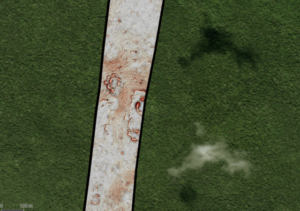Activists are pushing for the first-ever UNESCO status for acoustics to be awarded to the calls of 400 bird species and rare frogs in the Mashpi cloud forest.
All listings featured in this story are independently selected by our editors. However, when you book something through our retail links, we may earn an affiliate commission.
Three weeks ago, a new species of glass frog (Hyalinobatrachium mashpi) was named by the team at Mashpi Lodge, a remote eco-hotel on the western flanks of the Andean Mountains, three hours northwest of Quito. When the tiny, transparent-bellied amphibian was first found, researchers thought it was the Valerioi glass frog, another similar-looking species endemic to the area. But after listening to recordings of the animal’s distinct call—a chirping, cricket-like sound—scientists were able to distinguish the Mashpi frog from its relatives.
For Miguel Sevilla, a Berklee-trained musician and corporate lawyer who serves as a director of Grupo Futuro, Mashpi’s parent company, the discovery underscored the importance of sound to the reserve’s conservation and research efforts. Since the property’s founding 10 years ago, in-house biologists alongside Ecuadorian and international researchers have documented nine new species on the 6,177-acre reserve, a tropical cloud forest that’s among the planet’s most biodiverse places.
Now, Sevilla has partnered with some of Ecuador’s leading environmentalists and humanitarians—Yolanda Kakabadse, the former president of WWF; Sofía Spechmann, the secretary general of CARE International; Paola Moscoso, a doctor of biology who specializes in the field of ecoacoustics; and Carolina Proaño, head of the non-profit Fundación Futuro—on a conservation initiative with farther-reaching consequences. Together with the Sacha Warmi Foundation, which advocates for Indigenous people and organizations in the Ecuadorian Amazon, the team is pushing for the Mashpi reserve and the surrounding Chocó and Pastaza regions to be protected by the UNESCO World Heritage Centre on the basis of “acoustic value,” a category not currently covered by the organization’s mandate. The parties began the process in 2019 and are currently working with government officials and ministers to get the category approved by this time next year.
While hundreds of natural heritage sites appear on the UNESCO World Heritage List, Sevilla believes the framework for eligibility is too narrow, and in some cases prioritizes visual impact over all else. He references the Grand Canyon as an example—“A place not on the list not because of extraordinary biodiversity, but largely because of visual aesthetic,” he says.
By contrast, the Mashpi cloud forest can’t be appreciated by sight alone, especially because of the thick fog that envelops the area. “It’s like the expression, ‘You can’t see the forest for the trees,’” he says. “You have to develop other senses in order to discern what’s there.”
By broadening UNESCO’s reach to include sites of extraordinary acoustic value, the team hopes to add a layer of protection to the Pastaza and Chocó regions, home to the majority of Ecuador’s primary forest, where logging, mining, and the palm oil industry pose an existential threat. In the Chocó region, which rivals the Amazon in terms of biodiversity, logging has razed 98 percent of the forest. And the area’s rich deposits of gold and copper have attracted large-scale mining operations. These activities poison the forest and imperil indigenous communities, like the Kawsak Sacha People, whose distinctive voices and songs have been registered in Ecuador’s National System of Cultural Heritage.
Sevilla sees the addition of an acoustic category on the UNESCO World Heritage List as an extension of the important sound-based work Mashpi is already doing. In 2019, the lodge partnered with the San Francisco-based non-profit Rainforest Connection on the installation of acoustic recorders scattered throughout the canopy of the reserve. These devices record the sounds of the reserve’s lush cacophony—the howling of monkeys, the squawking of toucans—which people can listen to by downloading the Rainforest Connection app. They also detect sounds of chainsaws and gunshots, which help rangers catch loggers and poachers in the act.
The recognition by UNESCO will be more impactful than rangers and listening devices, says Sevilla, as it will reach a wider audience and appeal to people’s emotions in a way that drives long-term action and commitment.
“Music, and sound in general, bypasses cognition,” he says. “I could tell you that the Mashpi reserve is home to over 400 bird species. But if you actually listen to their sounds, you’re going to connect with the place in a much more direct and emotional way.”
Beyond Ecuador, Sevilla sees the addition of an acoustic category as being a critical tool that other destinations could leverage to drive conservation and connection.
“Ultimately, tourism is about attention,” he says. “As you widen ways of endearing yourself to a place through mediums like sound, you widen your appetite for protection.”




